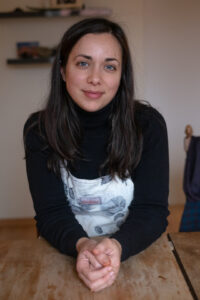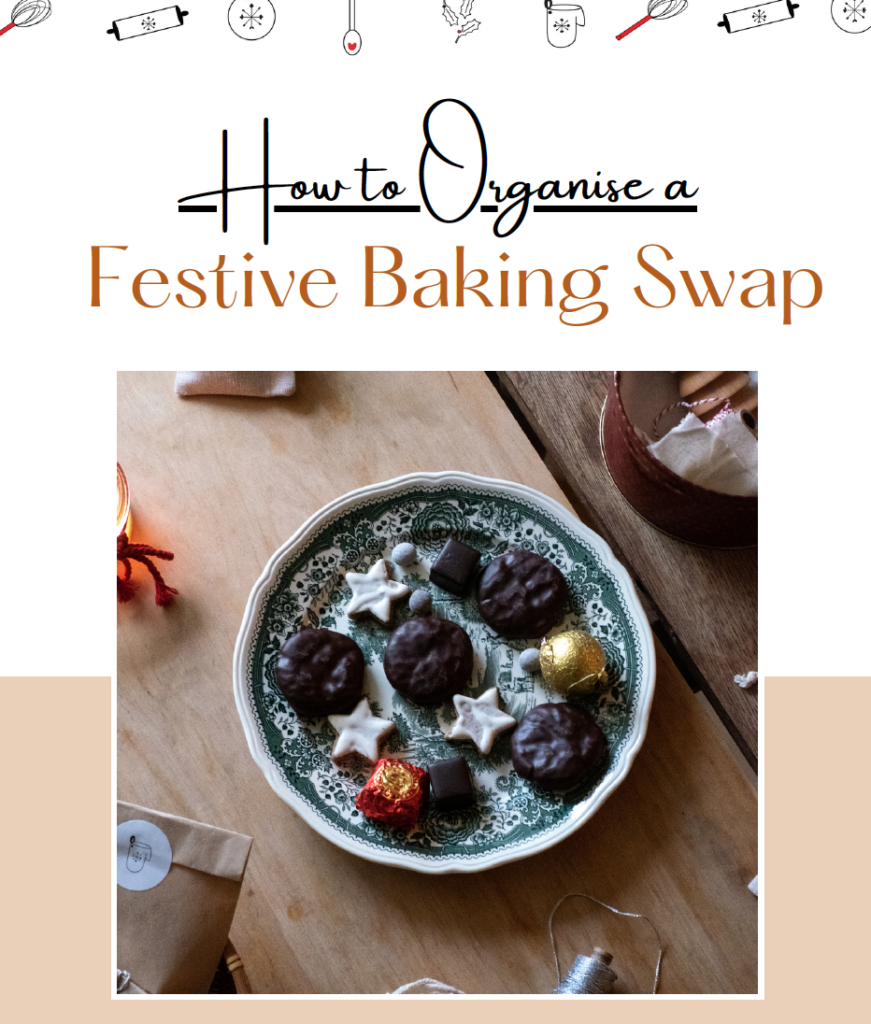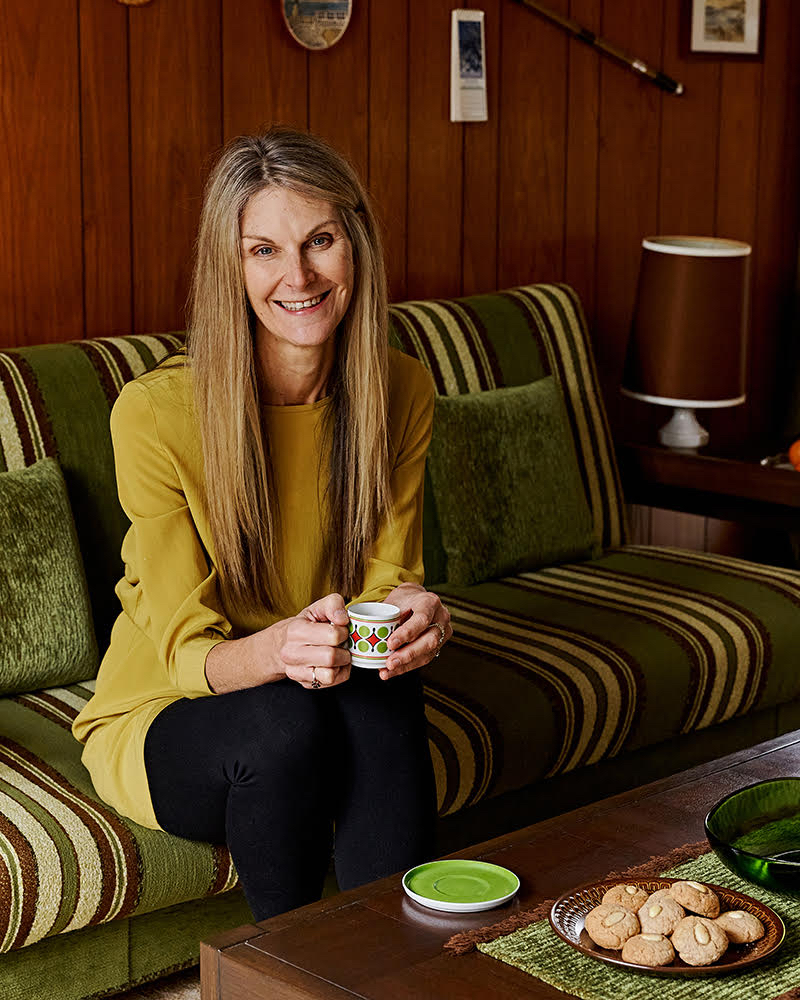
Paola Bacchia – Foodie Profile
In this Foodie Profile I chat with Melbourne based cookery teacher and cookbook author Paola Bacchia. She shares her career journey, recommendations on eating in Italy, shopping for Italian ingredients and her observations about Italian food culture in Australia. She also talks about her four cookbooks, including her latest, At Nonna’s Table which is inspired by Paola’s late mother, Livia.
1. Please tell us a little bit about how you started your journey in becoming a cookery teacher and cookbook author.
My life in food started when I was in my 40s, at a time when I was spending a lot of time with my elderly parents. I hadn’t cooked much growing up but just being back in my mother’s kitchen helping her cook really inspired me. Somehow her food traditions and Italian recipes that I hadn’t taken much notice of wove their way into my soul at that late age. I realised they had always been buried there and in actual fact I really loved cooking!
My food career per se started with a stint on Masterchef Australia (filmed late 2011). Meeting other foodies lead me to join Instagram and to start a blog called Italy on my mind. I found the online interaction with people who loved Italian food really exciting. On my blog I wrote “in food there are memories” and I posted family stories, food photos and recipes. I loved the concept of mothers/grandmothers relaying their recipes to their children/grandchildren and regional Italian cooking. I was inspired to teach others my recipes. So I started a home cooking school in 2014.
Further elaboration of the blog concept to a cookbook came when I was approached by a publisher in 2015 on the strength of my online presence and photos. I was very excited to have a career change later in life as prior to this I was working full time in healthcare.
2. You’ve published four cookbooks to date. Could you briefly describe each one and share your favourite?
First came Italian Street Food. My publisher Smith Street Books approached me to write and photograph a book on Italian Street Food in 2015 and within a few months I was in Italy researching and taking photos. The concept is very much that street food is tasty, often cheap, but local and has a story and a tradition. It is not fast food! It was released in 2016 and re-editioned in 2021.
Adriatico is about a journey, from Puglia in the south to Trieste in the north-east. I took a 3-month trip to research and photograph the book, which has recipes that are less well-known, most of which were inspired by my chats and meals with locals. It was released in 2018 and is currently being re-editioned for re-release in late 2024.
Istria is about the foods of Istria, which is the promontory at the northernmost point of the Adriatic Sea, where my father was born. The book is inspired by the Istrian-Italians who left what became Yugoslavia in the aftermath of World War II (and those who remained) and how they kept their stories alive through food, recipe sharing and community. It was released in 2021.
My most recent book At Nonna’s Table has just been released (March 2024 in Australia and Europe, April in the US). In some ways this is a memoir of our family recipes, told through my mother Livia, nonna (grandmother) to 4. Her recipes are Italian home cooking, making use of few quality in-season ingredients to make food for the family to share and love. She continues to be my inspiration in so many ways.
My most recent book is my favourite (I think most authors would say that!) as I am so excited that it is finally in bookshops. Istria, for personal reasons, is also close to my heart.

3. Your newest release is At Nonna’s Table: One Italian family’s recipes, shared with love, and it was inspired by your late mother, Livia. What meaning did cooking the food from her homeland have for your mother in Australia and how did her cooking influence you?
Livia migrated to Australia as a young bride in 1950. Food from her homeland connected her to her home, to her family, to the town where she lived and to her community. She had little cooking experience when she arrived in Australia, so she asked her brother Fidenzio, who migrated here in 1952, to bring her an Italian cookbook. So she used that as a basis for learning as well as the other ladies from Italy’s north that were in her social circle. Her reputation as a cook grew quickly among friends, and there are stories of several unexpectedly “dropping by” in the late afternoon hoping they might be invited to stay for a meal (and they generally were!).
Although I did not cook much when I was younger, my understanding of preparing Italian food, in particular that from the north, seemed innate. You don’t know how much you actually absorb; the tastes, the smells, the sounds of cooking from when you are young. My food is very much like my mother’s. I regularly cook from my cookbooks, in particular from At Nonna’s Table and Istria as they are mostly family recipes.
4. In what ways would you say the value placed on Italian food and culture in Australia has changed since your upbringing?
My parents would decry the lack of basic ingredients (like olive oil) in the first years they were here in the early 1950s, as well as the lack of community activities that did not involve beer, a pub and fish and chips! My memories of primary school are that children in the playground would turn up their nose at the contents of my lunch box as it invariably smelled of garlic and contained cured meats or sliced up polpette (meatballs) in a crusty bread roll. It was not cool to have anything remotely not Anglo-Saxon back then!
That has changed incredibly, in particular in the last 20 years. You can find most Italian food products here, there is an annual Italian film festival, high-end Italian clothing brands and dozens of fantastic Italian restaurants. Everyone loves anything Italian! The culture of bars (as in coffee shops) where you can stand at the bar to sip your espresso is alive and well, at least in Melbourne where I live.
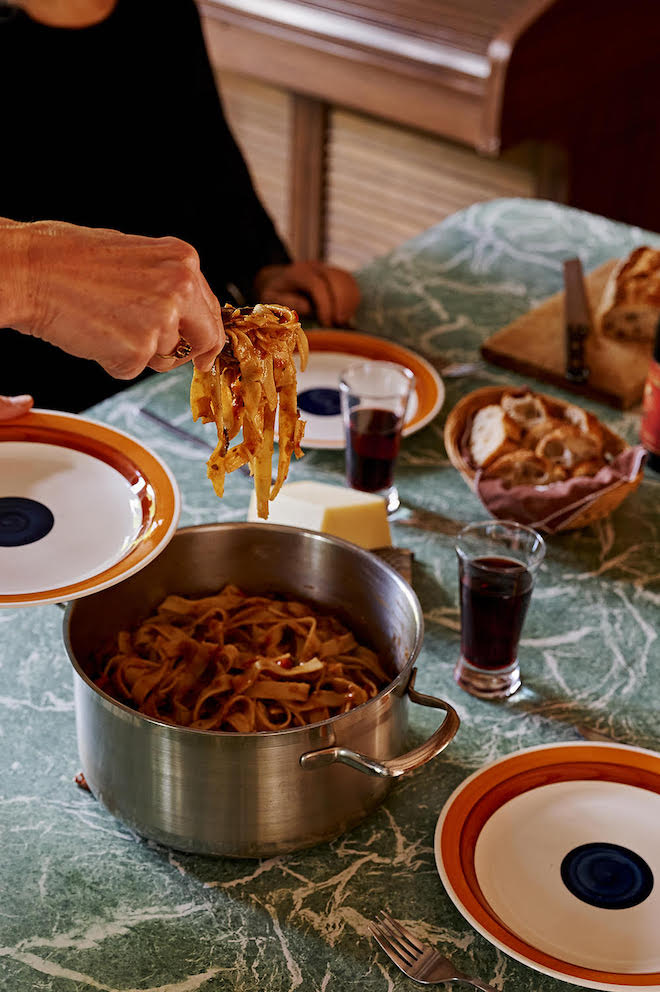
5. What inspires you to create your cookbooks?
My culture is what inspires me most to create cookbooks. My ancestry is from the lands surrounding the Adriatic sea (a branch of the better known Mediterranean). I couldn’t imagine for example writing a Spanish or Indian cookbook; I would find it personally inauthentic. My mother in particular loved telling stories and the kitchen or dining table at mealtimes was where we would listen, talk and eat. The meals were not rushed; meals and being with those you love is far too important for that. Her recipes are full of memories for me. I create my cookbooks as a way connect it all; the recipes, often made with simple ingredients, are about creating your own memories with your loved ones.
6. What are your favourite shops to stock up on Italian ingredients and food supplies in Australia, and what are your Italian pantry staples?
I live in inner city Melbourne and go to the Preston Market weekly. I go to the Italian greengrocer and buy whatever looks fresh and is in season. I also get my meat there from an Italian family butcher as well as fish. I occasionally go to the Victoria Market in the city to visit my favourite tomato man Giovanni at “Tomato City”; he also has great artichokes when in season. I love Mediterranean Wholesalers, which is an old style Italian supermarket, for smallgoods, cheese and olive oil. For speciality items I go to Enoteca Sileno.
Pantry staples are flour (to make pasta), polenta, anchovies in oil, salted capers, tins of tomato, two types of extra virgin olive oil (one for cooking and an excellent quality one for drizzling/dressings), three types of vinegar (white wine, red wine, balsamic), dried porcini mushroom, pine nuts, tins of sardines in olive oil, fior di sale (flaky salt) and Grana Padano cheese (though I guess the latter is a fridge not pantry item!).

7. Where are your favourite restaurants and cafes to experience authentic Italian food and culture in Australia?
Carlton is the traditional Italian cultural and food hub in Melbourne. This is where the Italian migrants of the 1950s and 1960s flocked to feel at home. It is sadly depleted of this vibe at the city end, but vibrant at the northern end. The Valmorbida family, who were friends of my parents and from Vicenza (Veneto) run a few eateries that are buzzing; among them is the gelateria (ice cream shop) Pidapipó, Agostino’s restaurant, Johnny’s Green Room and King and Godfrey Deli. Then there is Brunetti for cakes, the Italian butcher Donati’s, DOC delicatessen, DOC pizzeria and coffee bar, Ti Amo and Di Stasio Carlton. I love the vibe of all of these, even just strolling through for a “passeggiata” (walk), gelato in hand.
There are also a few great lesser known restaurants which I love, among them Alta Trattoria (which is Piemontese) in Fitzroy and Bar Idda, a long standing and fun Sicilian style restaurant in Brunswick. I am quite biased towards the inner north of Melbourne, where I live!

8. For visitors to Italy, which do you consider the most underrated destinations for food lovers, and why?
I have so many favourites!!
I love places that are on the border with neighbouring countries, so you get a mix of cultures and foods that is quite unique. You might hear different languages spoken as well; I love it when different cultures live side by side and are influenced by each other. They are not what most people expect when they seek Italy! Places that I love are Bolzano, which is in the Sud Tyrol and therefore influenced by Austria. There you will find gnocchi made out of bread and local cured meats served in a broth (canederli) and flaky apple strudel. I also love the region of Friuli (largest town is Udine), that borders with Slovenia and where prosciutto San Daniele is from (as well as many other cured meats). The hills of the Collio and the Carso in the region have incredible underrated wines with lesser known grape varieties, especially the whites Malvasia, Ribolla Gialla and Pinot Bianco.
Other favourites are in the South: in Sicily there is Catania (it has the most amazing markets and vibe in the streets) and in Puglia there is Lecce (a Baroque looking town with incredible pastries).
9. When you visit Italy, are there any specific dishes you always seek out or can recommend?
I eat meat rarely in Australia, but in northern Italy I indulge in what is invariably excellent quality; if I see vitello tonnato (a veal dish with a tuna sauce with capers), tartare or horse meat are on the menu, I will order that. I rarely order pizza or pasta as I think we do that well here in Australia, so I look out for fish (sardines every time, especially “a beccafico” in Sicily! And cuttlefish/squid any way but especially in its ink, around Venice) and seasonal vegetables. In spring that means wild asparagus and artichokes, and in autumn/fall anything with fresh porcini mushrooms. I also eat one gelato (or more) per day and look on social media to find “gelaterie” that have good reviews! I figure you are walking a lot when travelling and there is a great joy in having an afternoon or evening stroll with a gelato in hand.
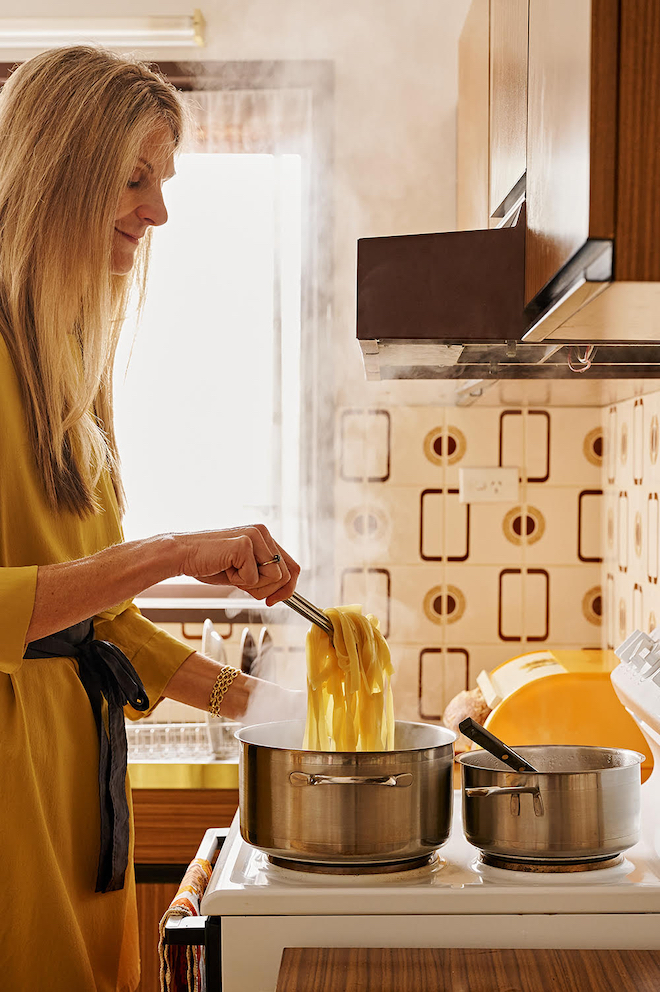
10. Do you have another cookbook or any new projects on the horizon – and if so, can you share any details?
As mentioned previously, Adriatico is being re-worked into a new edition, to be published in late 2024. I am travelling to the Adriatic coast of Italy in late May 2024 to take more location photos for the book.
I have some ideas for my next cookbook, but that will be a longer term project. I will be working ideas/research into my 2024 trip. I will be going backwards and forwards to Europe quite a bit in the future as my daughter who lives overseas has recently had a baby. That means I will have more time to research but most importantly it also means that I am now a nonna. My new cookbook could also be about my table!
Instagram: @italyonmymind
Website: https://www.italyonmymind.com.au
Books: Links for purchases in Australia directly from Paola (signed and wrapped!) via her website as above, as well as via the following links:
https://mybook.to/atnonnastable
https://mybook.to/ItalianStreetFood
Promotional events:
At Nonna’s Table in conversation with Paola Bacchia at The Coastal Italian in Sydney
On: May 5th 2024
https://www.thecoastalitalian.com/event-details/at-nonnas-table-in-conversation-with-paola-bacchia


